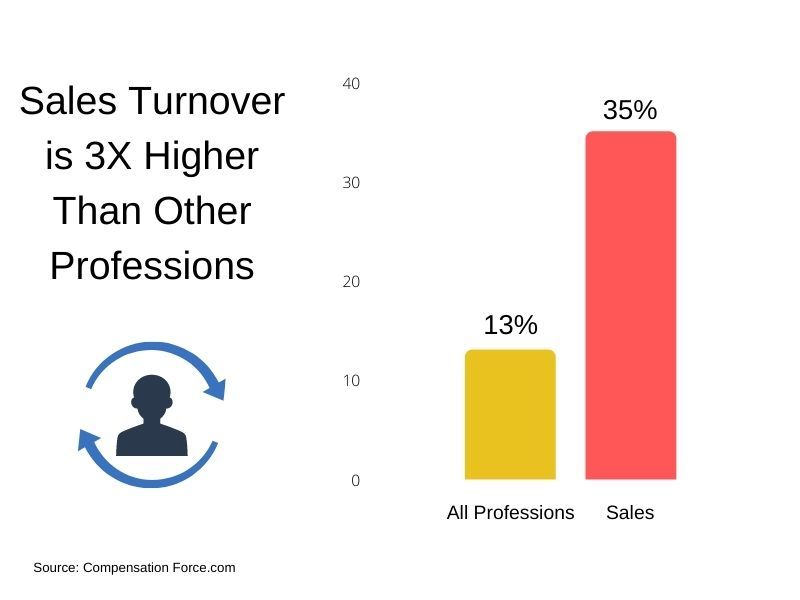Welcome to the world of training new B2B sales employees, a journey filled with as many challenges as there are opportunities. In this ever-evolving business landscape, the task of bringing a new salesperson up to speed is akin to teaching someone to juggle while riding a unicycle – daunting, yet not impossible.
The Steep Learning Curve: Product Knowledge and Benefits
First and foremost, let’s talk about the elephant in the room – the time it takes for a new salesperson to truly understand the product and its main benefits. This is no small feat. Each product or service is a complex puzzle, and mastering it requires more than just memorization of features and benefits. It’s about understanding the soul of the product, its place in the market, and how it solves real-world problems.
Imagine trying to sell a Swiss Army knife without knowing all the tools it contains or the myriad ways it can be used. That’s what it’s like for a new salesperson grappling with a new product. The learning curve can be steep, and the journey from novice to knowledgeable is often a long one.
The Inconsistency Conundrum: Personal Strengths and Weaknesses
Each salesperson is a unique blend of strengths, weaknesses, and personality traits. This diversity, while a boon in many ways, leads to inconsistencies in how your company’s products are presented and sold. One salesperson might be a wizard at relationship-building but struggle with technical details, while another might be a product encyclopedia but lack the softer skills of engagement.
This variance isn’t just a small hiccup; it’s a major contributor to the inconsistency in outreach and customer experience. One customer might get a thorough, feature-rich presentation, while another receives a more generic, less informative pitch. This inconsistency can tarnish your brand’s reputation and lead to lost sales opportunities.
Turnover Troubles: The Revolving Door Impact
Turnover in sales teams is like a revolving door that never stops spinning. Each time a salesperson leaves, they take with them not just their knowledge and skills, but also their relationships and pipeline. The impact on a company is profound – fewer people to prospect, a drop in sales momentum, and the daunting task of starting all over again with a new hire.

The cycle of hiring, training, losing, and then retraining is not just costly in terms of time and resources; it’s a morale killer. It’s like taking two steps forward and one step back, continuously. The continuity in sales outreach suffers, and so does the consistency in the quality and quantity of prospects.
AI to the Rescue: Automating for Consistency and Minimizing Turnover Impact
Enter AI Sales automation outreach, the knight in shining armor for sales teams. AI has the potential to revolutionize how sales teams operate, especially when it comes to automating the prospecting process and creating a consistent outreach experience.
Imagine a world where AI tools handle the initial stages of prospecting – identifying potential leads, initiating contact, and even qualifying these leads. This automation ensures that regardless of who is on your sales team at any given time, the outreach remains consistent. Your company’s message is delivered in a uniform, professional manner, and the quality of leads remains high.
AI doesn’t just bring consistency; it also minimizes the impact of sales turnover. When a salesperson leaves, their AI-assisted pipeline doesn’t leave with them. The system keeps running, the leads keep coming, and the transition to a new salesperson becomes smoother and less disruptive.
The Future of Sales: AI-Enhanced and Employee-Enabled
The integration of AI into the sales process isn’t about replacing salespeople; it’s about enhancing their capabilities and allowing them to focus on what they do best – building relationships and closing deals. With AI handling the heavy lifting of prospecting, salespeople can spend more time understanding customer needs, personalizing their approach, and ultimately, selling more effectively.
AI also offers a learning platform for new sales employees. By analyzing successful sales patterns and techniques, AI can provide insights and guidance, accelerating the learning curve for product knowledge and effective selling strategies.
Conclusion: Embracing AI for a More Robust B2B Sales Training
Training new sales employees will always be a challenge, but it’s a challenge that can be mitigated with the right tools and approaches. By embracing AI for automating prospecting and creating consistency across the sales team, companies can reduce the impact of turnover and ensure a steady flow of quality leads.
In this new AI-enhanced sales landscape, the focus shifts from constantly playing catch-up with training and prospecting to building a more robust, efficient, and effective sales force. So, let’s welcome AI into our sales toolkit and watch as it transforms the trials of training into triumphs of selling.



